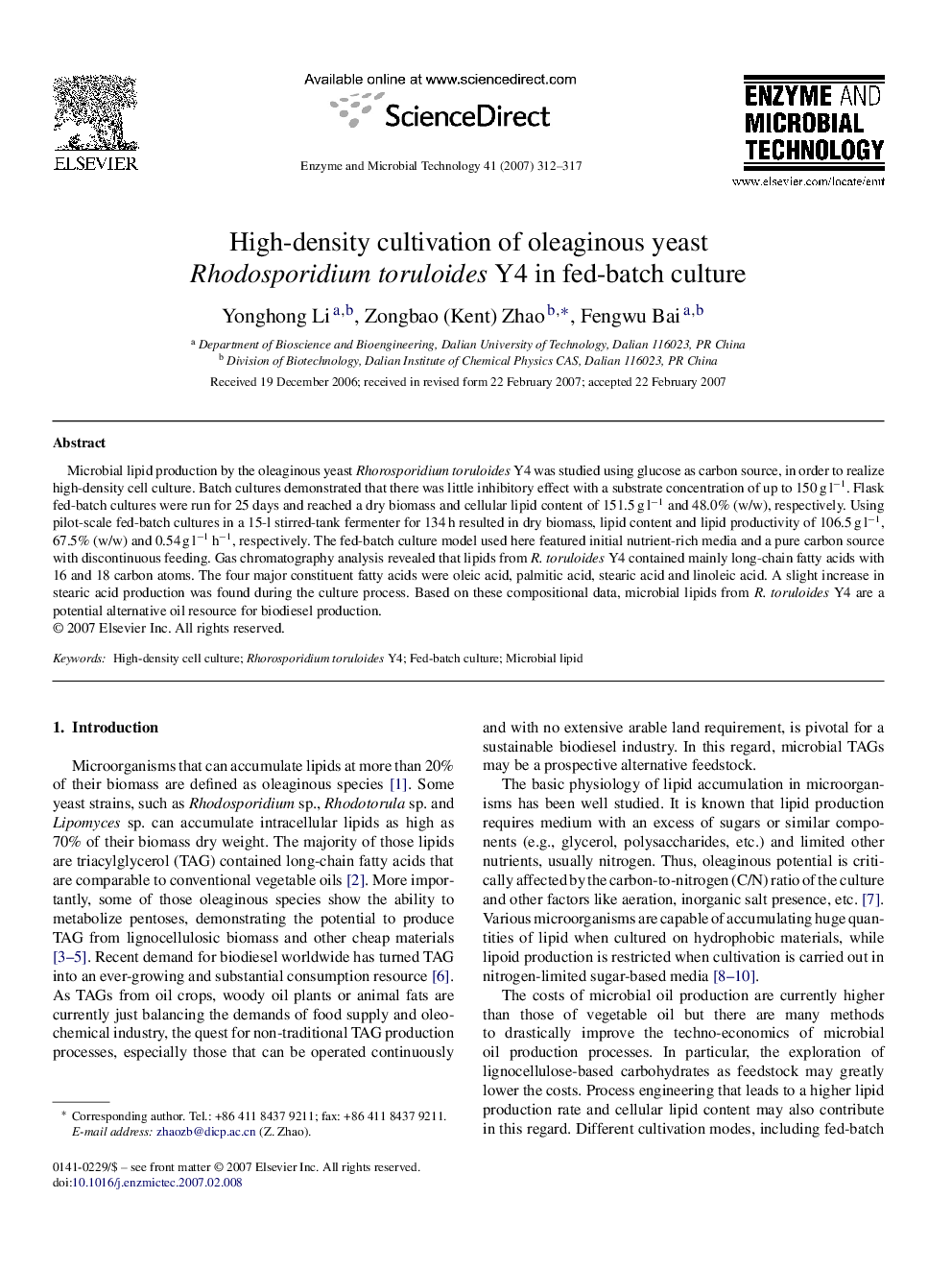| Article ID | Journal | Published Year | Pages | File Type |
|---|---|---|---|---|
| 18727 | Enzyme and Microbial Technology | 2007 | 6 Pages |
Microbial lipid production by the oleaginous yeast Rhorosporidium toruloides Y4 was studied using glucose as carbon source, in order to realize high-density cell culture. Batch cultures demonstrated that there was little inhibitory effect with a substrate concentration of up to 150 g l−1. Flask fed-batch cultures were run for 25 days and reached a dry biomass and cellular lipid content of 151.5 g l−1 and 48.0% (w/w), respectively. Using pilot-scale fed-batch cultures in a 15-l stirred-tank fermenter for 134 h resulted in dry biomass, lipid content and lipid productivity of 106.5 g l−1, 67.5% (w/w) and 0.54 g l−1 h−1, respectively. The fed-batch culture model used here featured initial nutrient-rich media and a pure carbon source with discontinuous feeding. Gas chromatography analysis revealed that lipids from R. toruloides Y4 contained mainly long-chain fatty acids with 16 and 18 carbon atoms. The four major constituent fatty acids were oleic acid, palmitic acid, stearic acid and linoleic acid. A slight increase in stearic acid production was found during the culture process. Based on these compositional data, microbial lipids from R. toruloides Y4 are a potential alternative oil resource for biodiesel production.
